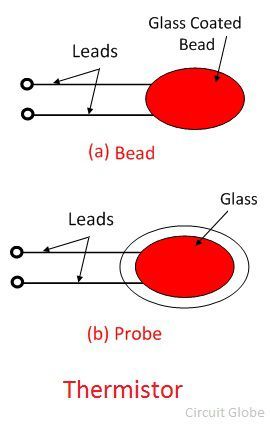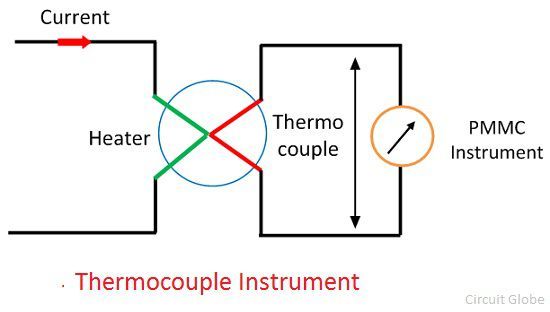Definition: The temperature transducer converts the thermal energy into a physical quantity likes the displacement, pressure and electrical signal etc. It is an electrical device used for automatic measuring of temperature. The main principle of the temperature transducer is to measure the heat and transfer the information after converting it into the readable form.
The following are the characteristic of the temperature transducer.
- The input is always a thermal quantity.
- Transducer mostly converts the thermal quantity into an alternating quantity.
- It is used for measuring the temperature and heat flow of the devices.
Sensing Element
The sensing element which is used in the temperature transducer must have the properties of changing the characteristics with the variation of temperature. For examples – In resistance thermometer, the platinum metal is used as the sensing element.
- The temperature sensing element converts the temperature into the heat.
- The change in temperature concerning resistance should be large.
- The sensing element must have high resistivity.
Types of Temperature Transducer
The temperature transducer is mainly classified into two types.
Contact Temperature Sensor Device
In such type of transducers, the sensing element is directly connecting to the thermal source. And the heat is transferred by the phenomenon of conduction. The conduction is the process through which the heat is transferred from one substance to another without the movement of the substance.
Non-contact Type Temperature Sensor Device
The sensing element is directly not contacting the thermal source. They use convection phenomenon for the transfer of heat. The convection is the process in which the heat is transfer by the movement of the substance. The non-contact type transducer is sub-categorised into the following categories.
Thermistor – The thermistor is a type of resistor whose resistance varies with the temperature. The resistance is measured by passing the small measured direct current, and this current causes the voltage drop across the resistance.
 The resistance thermometer is categorized into two types.
The resistance thermometer is categorized into two types.
- Negative Temperature Coefficient – Used for sensing the temperature.
- Position Temperature Coefficient – Used for controlling the current.
Resistance Thermometer – The resistance of metal varies with the temperature. And this property of the metal is used for measuring the temperature. The resistance thermometer uses the platinum as the sensing element and hence measures the surrounding temperature.
Thermocouples – The thermocouple converts the temperature into the electrical energy at the point of the contact. It works on the principle that the metals have different temperature coefficient and when these two metals join together then the voltage induces, and this voltage is directly proportional to the temperature.
Integrated Circuit Temperature Transducer – The IC temperature transducer uses the combination of temperature sensing element and an electronic circuit for measuring the temperature. The integrated temperature transducer has a linear characteristic. The operating range of the transducer is very less. It lies between 0ᵒ to 200ºC which is one of the major disadvantages of the transducer.


